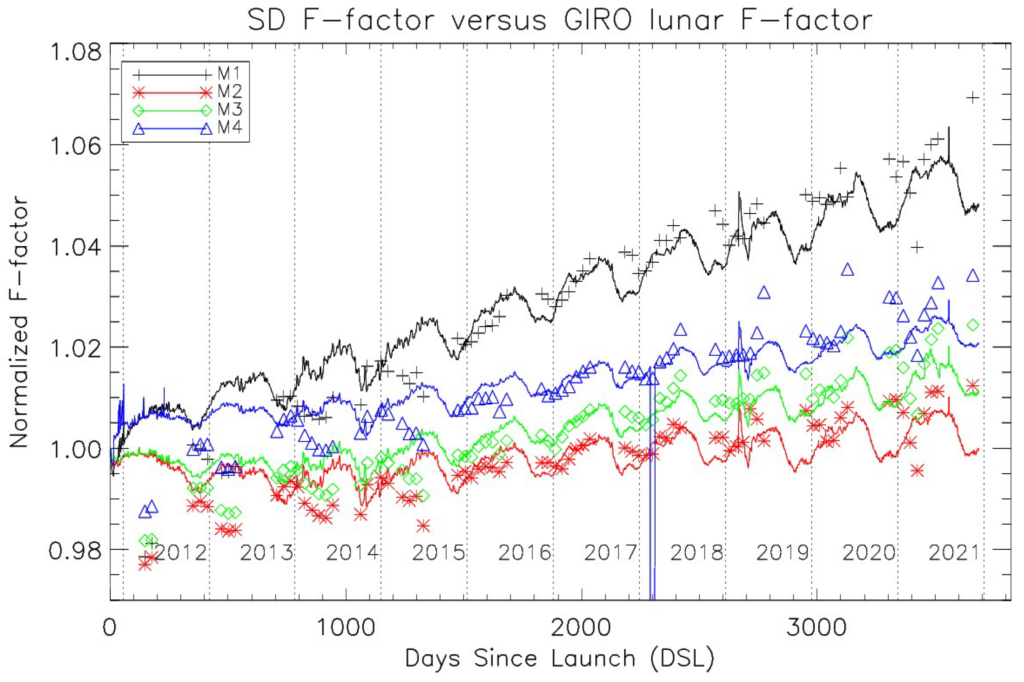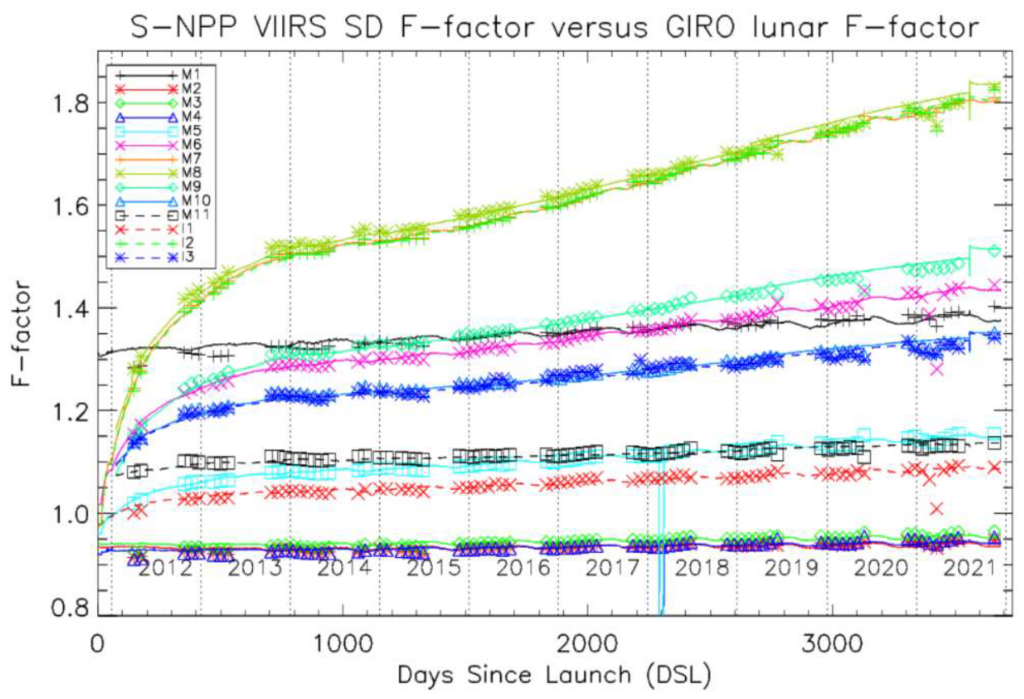ESSIC/CISESS Scientists Xi Shao and Wenhui Wang co-published an article in Remote Sensing on July 13, 2022 that describes more than a decade of research on S-NPP VIIRS reflective solar bands (RSBs).
Over the last ten years, S-NPP VIIRS has performed well and successfully provided earth view (EV) observations. The onboard Solar Diffuser (SD), has provided a primary source of on-orbit calibration as a transferring radiometer with the measured SD surface properties, called the Bidirectional Reflectance Distribution Function (BRDF) from the extensive pre-launch calibration. Due to increased surface roughness from the UV portion of solar illumination, the reflectance of SD has been degraded, and it was measured and compensated to the on-orbit calibration, called SD F-factors (see figures below).
The SD F-factors have been successfully validated using monthly lunar calibration coefficients (called lunar F-factors) within two percent standard deviation compared to SD trends over a decade. Lunar observations played a crucial role for S-NPP VIIRS on-orbit calibration in conjunction to the SD calibration. The long-term lunar trends provided an independent source of calibration to validate or correct the relative calibration differences from the SD calibration. The authors concluded that on-orbit lunar calibration is necessary for future remote sensing instruments to ensure the long-term radiometric accuracy of its related scientific products.
Xi Shao is a research scientist at ESSIC/CISESS and Department of Astronomy of University of Maryland. He supports radiometric calibration and validation work for Suomi-NPP and NOAA-20 Visible Infrared Imaging Radiometer Suite (VIIRS) instrument and METimage on EPS-SG.
Wenhui Wang is a visiting associate research scientist at ESSIC/CISESS supporting calibration and validation of VIIRS onboard Suomi-NPP/NOAA-20 and METimage onboard EPS-SG.
To access the article, click here: “S-NPP VIIRS Lunar Calibrations over 10 Years in Reflective Solar Bands (RSB)”.







